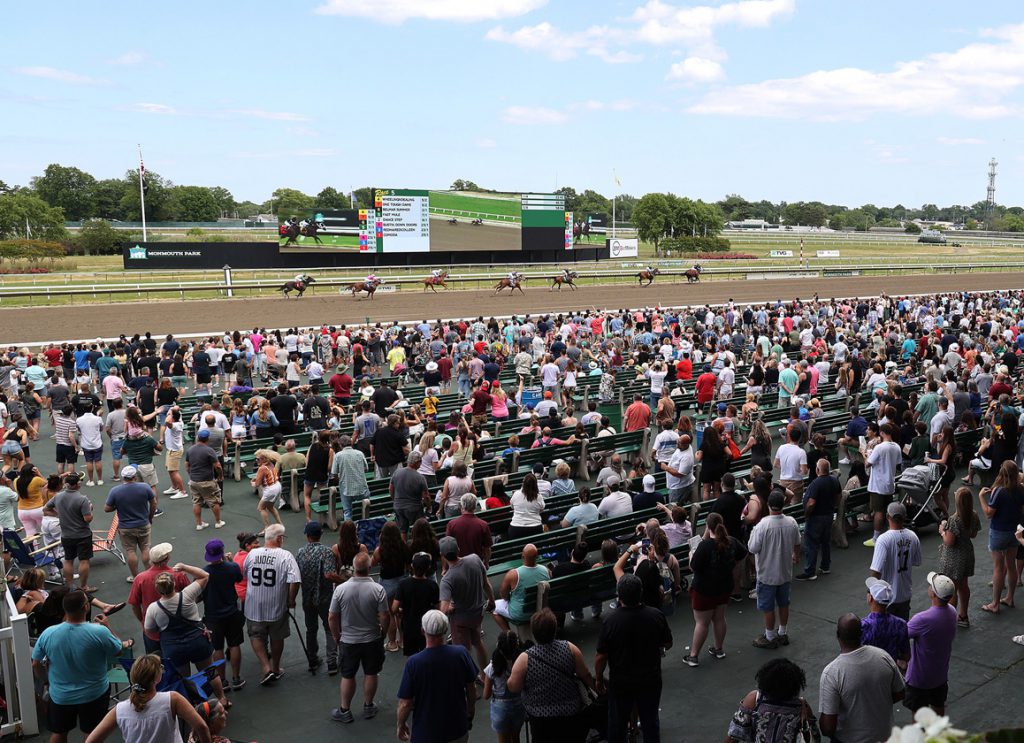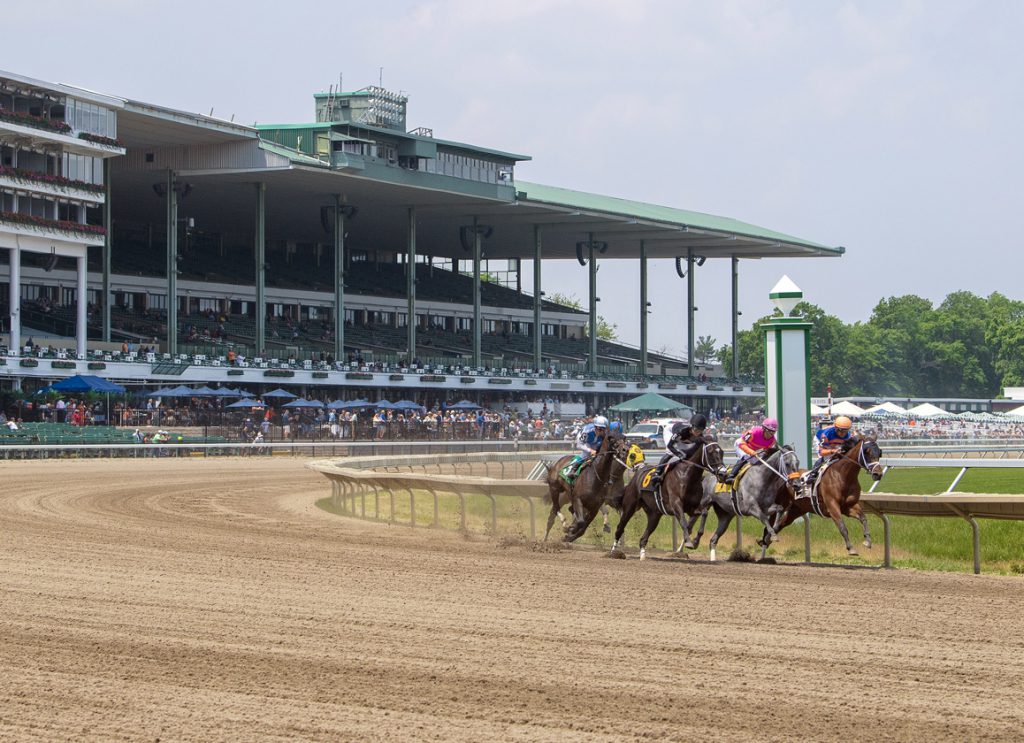The Horseracing Integrity and Safety Act's (HISA) drug control program has encountered some choppy waters since its launch on May 22, encapsulated by events surrounding the law's rules on intra-articular joint injections.
At the end of last month, HISA CEO Lisa Lazarus explained that the Authority–the non-profit umbrella broadly overseeing implementation of the federal law–had temporarily suspended full enforcement of its rules surrounding intra-articular joint injections prior to workouts.
Under HISA's rules as written, trainers are prohibited from giving their horse intra-articular joint injections within 14 days prior to the post-time of a race, and within seven days prior to any timed and reported workout. A violation of these rules could result in a 60-day suspension for the trainer.
According to an announcement dated June 26, the prohibition of such injections within seven days prior to a workout shall be enforced only by making the horse ineligible to race for a period of 30 days. This temporary measure will last until July 15, 2023. HISA had also issued a bulletin to stakeholders on June 23 stating the new policy.
The decision was made, explained Lazarus, because of general confusion surrounding the rules among horsemen. Between 15 and 20 trainers had breached the rule surrounding intra-articular joint injections prior to a workout.
Lazarus said that the names of the suspended horses would be publicly issued. But when pressed by the TDN, the Horseracing Integrity and Welfare Unit–which implements HISA's anti-doping and medication control (ADMC) program–initially responded that the names of these horses would not be made public.
On Friday, HIWU reversed course and issued the names of the horses in question. The list shows that nine of the horses in question had competed during the period of their 30-day ineligibility to race. Three had won. The 30-day ineligibility to race was made for the welfare of the horse, Lazarus had initially explained.
Because of various questions raised over this episode, as well as other issues raised by readers over the past few weeks, the TDN has decided to maintain a Q&A surrounding the rollout of HISA's anti-doping and medication control program. The answers to the questions come from representatives from either HISA or HIWU.
Over the next few days and weeks, this Q&A will be updated as more questions are fielded, and as the TDN receives answers from HISA and HIWU.
TDN: How much does a split sample cost?
The cost of a split sample to test for a Banned Substance is $2,000. The cost of a split sample to test for a Controlled Medication is $1,200.
TDN: Why does it cost substantially more than had typically been the case for a split sample?
Fees were negotiated with the laboratories to ensure expedited reporting timelines and uniformity in testing standards.
TDN: In instances of a provisional hearing after a positive finding for a banned substance (and before the full hearing before an arbitral body of 1-3 persons): Who specifically arbitrates that hearing? And where is that hearing held?
The Provisional Hearings are arbitrated by a member of the Arbitral Body, which is selected by JAMS. The hearing may be held by phone/video conference call.
TDN: How much does the provisional hearing cost?
The cost depends upon the time required by the arbitrator. The Covered Person does not pay any of the costs up front and has the option to request that HISA/HIWU cover the full cost rather than splitting them with the Covered Person.
TDN: What is the timing of that hearing? Does HIWU always wait for the split sample to be returned before holding that hearing, for example?
Timing depends on how quickly an arbitrator can be cleared of conflicts and schedules with all parties can be coordinated. HIWU does not wait for the B sample (split sample) to come back before holding the hearing.
TDN: What happens when a trainer is provisionally suspended? Can that trainer's horses be transferred to the trainer's assistant? Or are horses required to be transferred to a person unconnected with the stable? Does the numeral size of a barn have any bearing on this decision?
When a trainer is Provisionally Suspended, they may not participate in any activity involving Covered Horses as well as any activity taking place at a racetrack or training facility. This means that the Covered Person cannot be involved in any direct care or conditioning of their Covered Horses.
However, the Covered Person can make arrangements for other individuals to oversee the care, wellbeing, and training of their Covered Horses. Trainers subject to Provisional Suspensions are not required to formally transfer their Covered Horses to another trainer via the HISA portal unless they want the horses to be eligible to participate in Timed and Reported Workouts and/or Covered Horseraces.
Regardless of the transfer status in the HISA portal, a Provisionally Suspended Covered Person may not oversee the daily care of their horses.
During a Provisional Suspension, horses cannot be transferred to the trainer's assistant(s). Transfer requirements are applicable regardless of the stable's size.
TDN: In regards claimed horses that have a subsequent post-race positive: Who pays for the split sample? The owner of the horse before it was claimed? Or the new owner who claimed the horse?
The owner of the horse before it was claimed.
TDN: If the horse in question runs back and wins before the test results come back, would that win result in an automatic DQ?
No, assuming all samples collected in connection with that race are negative.
TDN: If the horse in question runs back and wins before the test results come back, and fails a post-race test for the same substance, would the previous trainer or the new trainer be held liable?
This would depend on the specific circumstances of the case (e.g., dates of races, substance(s) detected).
TDN: HISA CEO Lisa Lazarus initially explained that the 15-20 horses that had been administered an intra-articular joint injection too close to a workout (and which were made ineligible to race for 30 days) would be made public by HIWU. When TDN asked HIWU about this public disclosure, the organization initially stated that these horses would not be made public. HIWU has since changed its mind. What was the reason for the initial confusion? And why did HIWU change course?
Since no violation was being enforced against the trainers of these horses, HIWU was not and is not required to disclose the names of the horses affected. Notices of potential violations are not considered proven or adjudicated violations.
However, HIWU ultimately disclosed the names and will continue to do so in the name of transparency and at the request of HISA.
TDN: How did HIWU/HISA land upon this 30-day ineligibility to race when the stand down period for intra-articular joint injections before a race is 14-days?
The rules (4320) state that Covered Horses who breezed less than seven days or raced less than 14 days after an IA joint injection become ineligible to race or breeze for one month following the date of the injection(s).
TDN: How was it that horses on the list who were supposedly ineligible to race actually ran? Who at HISA or HIWU was responsible for this lapse? Will responsible parties face any consequences?
Furthermore, of these 15-20 horses that violated the intra-articular workout rule (and made ineligible to race for 30 days) will you take any actions regarding those horses who subsequently ran during the period of their suspension?
HIWU had not anticipated the large volume of violations related to this rule and given the newness of the ADMC program HIWU processed and notified the cases as quickly as they could. The horsemen continued to train and race their horses prior to receiving any notification, therefore they will not receive any penalties.
HISA is reviewing the rule and procedures and will make an announcement prior to July 15 on the status of the rule and related procedures subsequent to July 15. Additionally, there were numerous other potential ADMC violations that needed to be investigated and/or processed, creating a much larger than expected workload. HISA and HIWU's top priority is the safety and welfare of each horse and measures have been taken to address these operational concerns.

The post Q&A: HISA’s Anti-Doping and Medication Control Program appeared first on TDN | Thoroughbred Daily News | Horse Racing News, Results and Video | Thoroughbred Breeding and Auctions.
Source of original post


